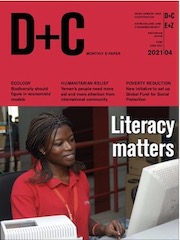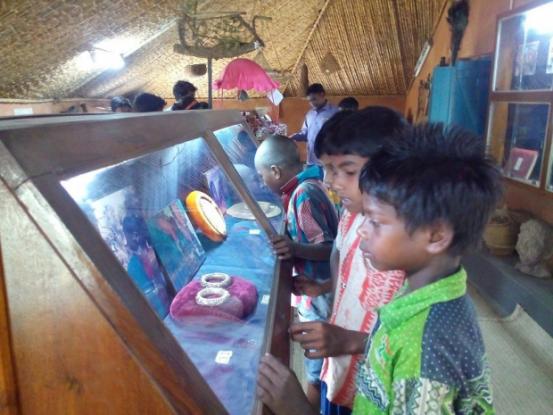The language and culture of India’s Adivasi tribes are at risk of erosion. Christian missionaries used to play a destructive role, but one of them actually planted the seed to save the heritage of the Santals, a tribe in eastern India, as Boro Baski, a member of the community, reports. | To read or download the article by Dr. Boro Baski (D+C (12/07/2016, pp. 14-16), click here >>
Source: Missionaries have contributed to disrupting Adivasi traditions, but helped to save heritage as well | D+C – Development + Cooperation
Address: http://www.dandc.eu/en/article/missionaries-have-contributed-disrupting-adivasi-traditions-helped-save-heritage-well
Date Visited: Sun Aug 07 2016 12:40:05 GMT+0200 (CEST)
Tips

Related posts >>
- For more information, type “tribal education”, “Adivasi language”, “Boro Baski Santal”, “Santiniketan Santal”, “Santal cultural heritage”, “Norway Adivasi” or similar search terms into the search window here: Google custom search – Indian press coverage of tribal culture and education >>
- Do the same here: Govt. of India, NGOs and international organisations >>
- Use the WorldCat.org search field seen below for the above authors and their publications:
Santal culture: music, video, eBooks and more
Audio | Santali Traditional and Fusion Songs: Ghosaldanga Bishnubati Adibasi Trust – West Bengal
eBook | Background guide for education
eBook | Free catalogue: Banam: One of the ancient musical instruments of the Santals – West Bengal
eBook | Free catalogue: Museum of Santal Culture (Bishnubati) – West Bengal
Education and literacy | Right to education
Infusing the Santhali Element in Schooling by Rina Mukherji
RSV School & Museum of Santal Culture
Santal | Santal Parganas | The Santals by Boro Baski | Santal music
Santals as a community: A brief introduction to their culture and approach to development
Video | Roots and Branches: The Lifeworld of an Enlightened Villager in West Bengal
Video | Santali video album “Ale Ato” (Our Village, Part 1 of 2) – West Bengal
To locate the Museum of Santal Culture in Bishnubati village (near Santiniketan) on the map seen below, open by clicking on the left button:
Tips for using interactive maps
Toggle to normal view (from reader view) should the interactive map not be displayed by your tablet, smartphone or pc browser
For details and hyperlinks click on the rectangular button (left on the map’s header)
Scroll and click on one of the markers for information of special interest
Explore India’s tribal cultural heritage with the help of another interactive map >>
